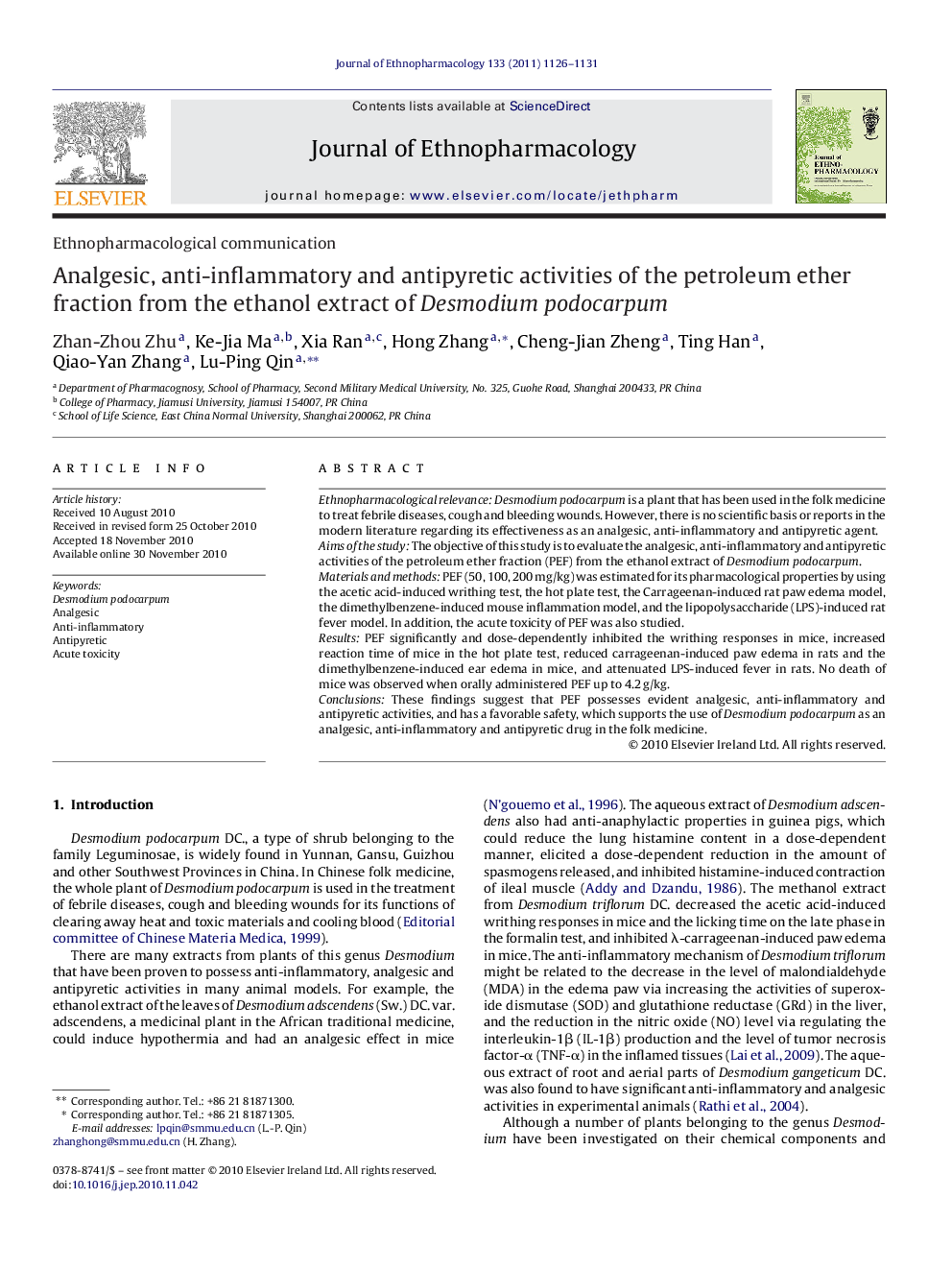| Article ID | Journal | Published Year | Pages | File Type |
|---|---|---|---|---|
| 5839920 | Journal of Ethnopharmacology | 2011 | 6 Pages |
Abstract
Ethnopharmacological relevanceDesmodium podocarpum is a plant that has been used in the folk medicine to treat febrile diseases, cough and bleeding wounds. However, there is no scientific basis or reports in the modern literature regarding its effectiveness as an analgesic, anti-inflammatory and antipyretic agent.Aims of the studyThe objective of this study is to evaluate the analgesic, anti-inflammatory and antipyretic activities of the petroleum ether fraction (PEF) from the ethanol extract of Desmodium podocarpum.Materials and methodsPEF (50, 100, 200Â mg/kg) was estimated for its pharmacological properties by using the acetic acid-induced writhing test, the hot plate test, the Carrageenan-induced rat paw edema model, the dimethylbenzene-induced mouse inflammation model, and the lipopolysaccharide (LPS)-induced rat fever model. In addition, the acute toxicity of PEF was also studied.ResultsPEF significantly and dose-dependently inhibited the writhing responses in mice, increased reaction time of mice in the hot plate test, reduced carrageenan-induced paw edema in rats and the dimethylbenzene-induced ear edema in mice, and attenuated LPS-induced fever in rats. No death of mice was observed when orally administered PEF up to 4.2Â g/kg.ConclusionsThese findings suggest that PEF possesses evident analgesic, anti-inflammatory and antipyretic activities, and has a favorable safety, which supports the use of Desmodium podocarpum as an analgesic, anti-inflammatory and antipyretic drug in the folk medicine.
Related Topics
Health Sciences
Pharmacology, Toxicology and Pharmaceutical Science
Pharmacology
Authors
Zhan-Zhou Zhu, Ke-Jia Ma, Xia Ran, Hong Zhang, Cheng-Jian Zheng, Ting Han, Qiao-Yan Zhang, Lu-Ping Qin,
